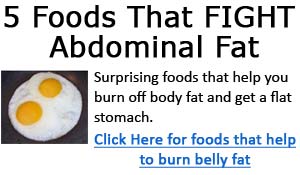40
30 30 Diet Plan and Nutrition Basics
40 30 30 Diets are extremely popular.
When implemented properly, the 40% carbohydrate, 30%
protein, and 30% fat nutrition program will help most
people make significant progress in shedding excess
pounds in the form of fat tissue.
When implemented properly, the
40% carbohydrate, 30% protein, and 30% fat nutritional
program will help most people make significant progress
in shedding excess pounds in the form of fat tissue.
The gist of my variation on this
program is relatively simple. You figure out your
daily maintenance calorie requirements. That is, how
many calories, given your level of activity, you need
to consume to maintain your current weight.
Counting Calories In 40 30 30 Diet
If you don’t already have
an idea of your maintenance calorie needs, one way
to figure it out is to keep a calorie intake journal
for 5-7 days. If your weight stays constant, then
you simply divide the total calories consumed by the
number of days and you’ll get your daily intake.
Once you have your maintenance level
(let’s say for example it’s 2250 calories),
get your calculator out and subtract 20% from that
number to find your target level. So in our example
it’s 2250 – 20% = 1800.
If we follow this example through,
then you should shoot for 1800 total daily calories
at a 40-30-30 ratio. Doing the math, you’ll
find that this translates into 720 calories from carbohydrates,
540 calories from protein, and 540 calories from fat.
At this point, you need to remember
that there are 4 calories in every gram of carbohydrate
and 4 in every gram of protein, but there are 9 calories
in every gram of fat. The next step is to translate your
calorie intakes into gram amounts. 720 divided by
4 = 180 grams of carbohydrates. 540 divided by 4 =
135 grams of protein. And 540 divided by 9 = 60 grams
of fat.
The final step is to take your gram
numbers and divide by the total number of meals you
can fit in per day (should be in the 4-6 meals range).
We’ll use 5 meals per day as our example.
So our final numbers end up being
36 grams of carbohydrates, 27 grams of protein, and
12 grams of fat. These are your target numbers for
each meal you eat. Of course, you may not be able
to end up exactly on target each time, but you should
use these numbers as solid guidelines.
I’ve found with many
clients that using prepared meals and/or 40-30-30
nutrition bars or shakes are a great way to help meet
your targets.
If you are serious about transforming
your body to its ultimate potential, get Will Brink's Bodybuilding Revealed with
great reviews from top pro athletes like Lee Labrada,
Charles Poliquin, and more.
Copyright MuscleMaster. Reprinted
with permission.



